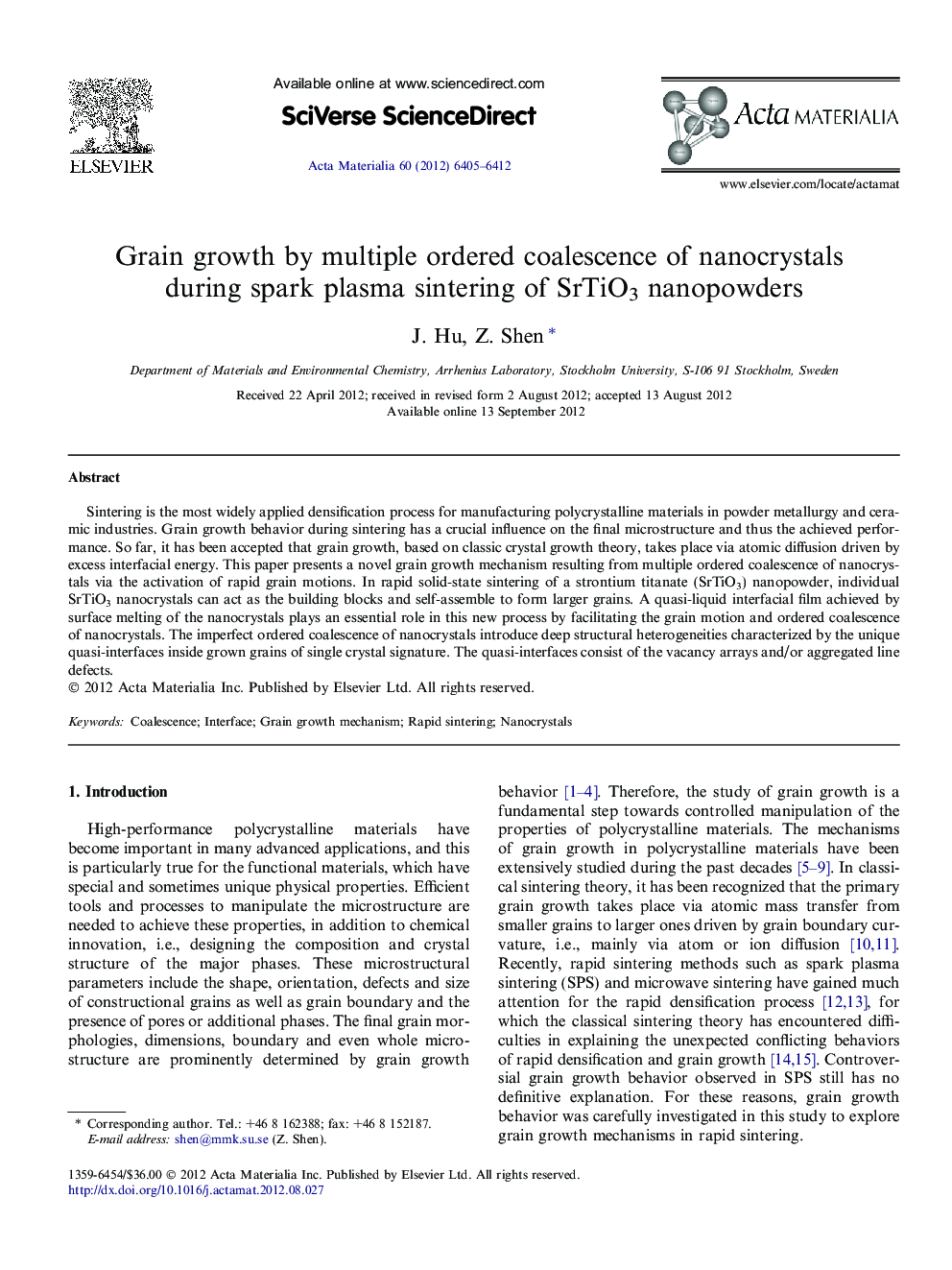| Article ID | Journal | Published Year | Pages | File Type |
|---|---|---|---|---|
| 1446497 | Acta Materialia | 2012 | 8 Pages |
Sintering is the most widely applied densification process for manufacturing polycrystalline materials in powder metallurgy and ceramic industries. Grain growth behavior during sintering has a crucial influence on the final microstructure and thus the achieved performance. So far, it has been accepted that grain growth, based on classic crystal growth theory, takes place via atomic diffusion driven by excess interfacial energy. This paper presents a novel grain growth mechanism resulting from multiple ordered coalescence of nanocrystals via the activation of rapid grain motions. In rapid solid-state sintering of a strontium titanate (SrTiO3) nanopowder, individual SrTiO3 nanocrystals can act as the building blocks and self-assemble to form larger grains. A quasi-liquid interfacial film achieved by surface melting of the nanocrystals plays an essential role in this new process by facilitating the grain motion and ordered coalescence of nanocrystals. The imperfect ordered coalescence of nanocrystals introduce deep structural heterogeneities characterized by the unique quasi-interfaces inside grown grains of single crystal signature. The quasi-interfaces consist of the vacancy arrays and/or aggregated line defects.
